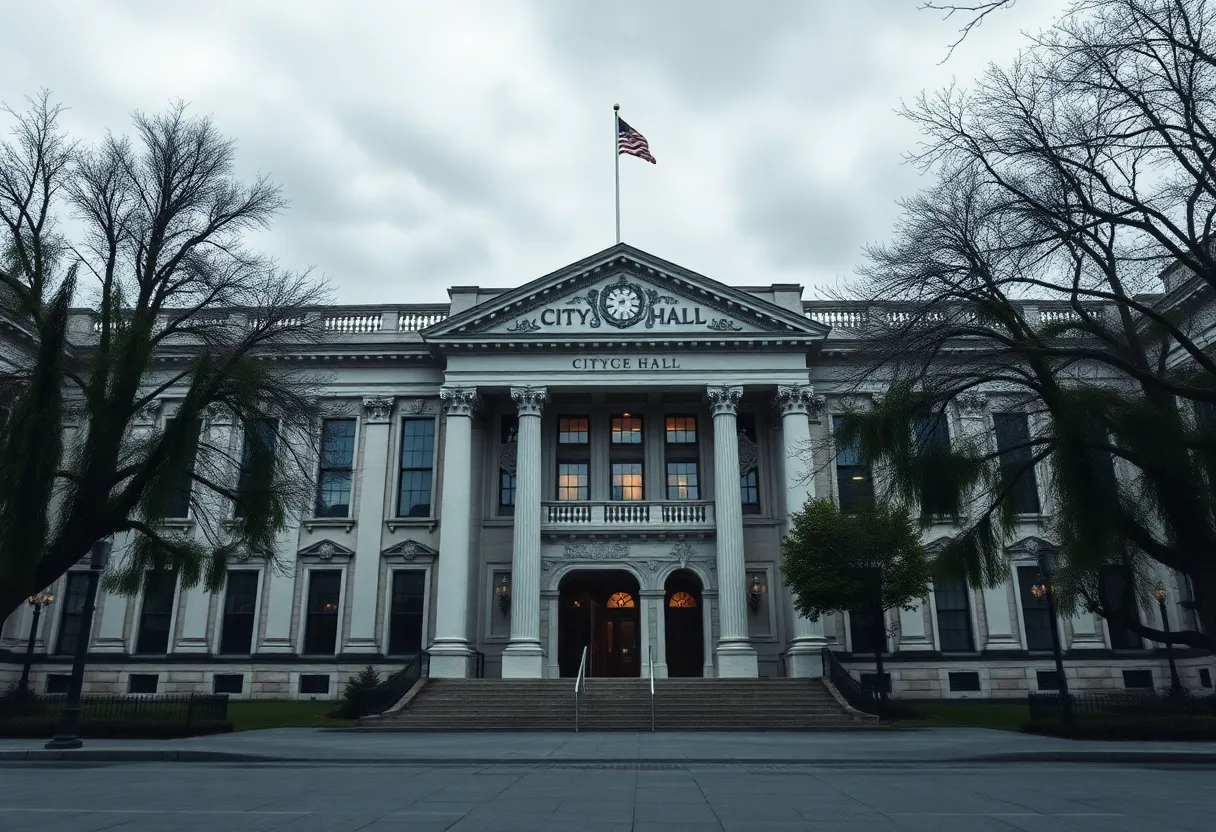News Summary
California is confronted with a staggering potential budget shortfall of $10 billion, a figure that could swell to $20 billion. Governor Gavin Newsom is poised to present this grim fiscal forecast to state lawmakers, highlighting the role of federal tariff policies and rising Medi-Cal costs in exacerbating the state’s financial woes. The impending deficit threatens essential programs and may complicate ongoing negotiations over the budget as federal spending uncertainties loom.
California Faces $10 Billion Budget Shortfall Amid Tariff Impacts and Medi-Cal Funding Issues
California is grappling with a potential budget shortfall of $10 billion, which could escalate to $20 billion or more, as Governor Gavin Newsom prepares to address state lawmakers about the alarming financial situation. The crisis is significantly influenced by President Donald Trump’s tariff policies, increased costs within the Medi-Cal program, and delays in tax filings from wildfire victims. Lawmakers have been warned to brace for a minimum deficit of $10 billion ahead of Newsom’s revised budget presentation, indicating ongoing financial instability.
In stark contrast to earlier projections made in early January, which anticipated a modest budget surplus, the recent assessment paints a troubling picture of California’s financial outlook. The Department of Finance’s previous expectations have been swiftly overshadowed by rising economic challenges. With income tax receipts exceeding forecasts by $4 billion, the looming threats of tariffs and subsequent price hikes could further hinder future growth in revenue.
Governor Newsom’s upcoming revised budget is expected to reflect a considerably downgraded economic outlook. Predictions indicate a decline in gross domestic product (GDP), an increase in unemployment rates, and heightened inflation, showcasing a concerning trajectory for California’s economy. Assemblymember Marc Berman has voiced alarm over the unexpected deficit, linking it directly to federal policies that potentially undermine the state’s economic health.
Following the budget presentation, Newsom plans to enter negotiations with key legislative figures, including Assembly Speaker Robert Rivas and Senate President Pro Tem Mike McGuire, with the objective of finalizing a budget agreement by the end of June. However, the negotiation process may face delays, particularly as Congress has yet to establish a federal spending plan. This uncertainty may compel state officials to adjust their budgetary expectations in light of anticipated federal cuts.
The implications of the budget shortfall extend beyond mere numbers; critical programs such as Medi-Cal and local homelessness grant initiatives are now at risk. Congressional GOP leaders could shift costs onto states, exacerbating the impact of budget constraints on vital services. In tandem, California’s Medi-Cal program is confronting an additional $2.8 billion funding shortfall, compounding the previous demand for a $3.4 billion loan deemed necessary for critical payments to healthcare providers.
Rising Medi-Cal enrollment, particularly among undocumented immigrants, and increasing pharmacy expenses have been identified as primary factors contributing to overspending within the program. This burgeoning funding shortfall has prompted criticism from certain state Republicans, who contend that Governor Newsom and Democratic leaders have made taxing commitments without feasible financial backing. Conversely, Democrats defend the expansion of Medi-Cal, underscoring its importance in preserving health coverage for many residents amid the ongoing pandemic.
Furthermore, proposed national Medicaid cuts from House Republicans pose a daunting challenge, placing California at the risk of losing between $10 billion to $20 billion annually—funds that officials argue are irreplaceable without federal assistance. This precarious situation magnifies the complexity and contentious nature of California’s current budget negotiations.
As discussions unfold, the financial landscape remains uncertain—with repercussions that could impact countless Californians. State leaders are tasked with navigating an intricate web of fiscal demands posed by local responsibilities, federal policies, and an unpredictable economy, placing the focus on finding a sustainable and equitable budgetary solution.
Deeper Dive: News & Info About This Topic
- Politico: California Faces $10 Billion Budget Deficit Amid Federal Cuts
- Wikipedia: California Budget
- Independent: California’s Medi-Cal Shortfall Hits $6.2 Billion
- Google Search: California Budget Shortfall
- CalChamber: California Governor Proposes $322B Budget
- Google Scholar: California Budget Deficit
- LA Times: Frank Lloyd Wright’s Hollyhock House Could Close Due to City Budget Cuts
- Encyclopedia Britannica: California

Author: Anaheim Staff Writer
The Anaheim Staff Writer represents the experienced team at HEREAnaheim.com, your go-to source for actionable local news and information in Anaheim, Orange County, and beyond. Specializing in "news you can use," we cover essential topics like product reviews for personal and business needs, local business directories, politics, real estate trends, neighborhood insights, and state news affecting the area—with deep expertise drawn from years of dedicated reporting and strong community input, including local press releases and business updates. We deliver top reporting on high-value events such as major conventions at the Anaheim Convention Center, including NAMM and VidCon, exciting games at Angel Stadium and Honda Center, and developments at Disneyland Resort Our coverage extends to key organizations like the Anaheim Chamber of Commerce and Visit Anaheim, plus leading businesses in hospitality, entertainment, and innovation that power the local economy As part of the broader HERE network, including HERECostaMesa.com, HEREHuntingtonBeach.com, HERESantaAna.com, and HERELosAngeles.com, we provide comprehensive, credible insights into Southern California's dynamic landscape.




